Sandstone Keepsake I
(Beneath the Paving Stones, Pangea)
2021
~ 60" x 60" x 14”
Liscannor Stone Paving Stones, Common Rush and Grasses, Polyethylene Tarp, Found Plastic Packaging, Found Plastic Bottles, Found Fishing Nets and Ropes, Found Shipping Straps, Assorted Found Plastics, Snail Shell
~ 60" x 60" x 14”
Liscannor Stone Paving Stones, Common Rush and Grasses, Polyethylene Tarp, Found Plastic Packaging, Found Plastic Bottles, Found Fishing Nets and Ropes, Found Shipping Straps, Assorted Found Plastics, Snail Shell
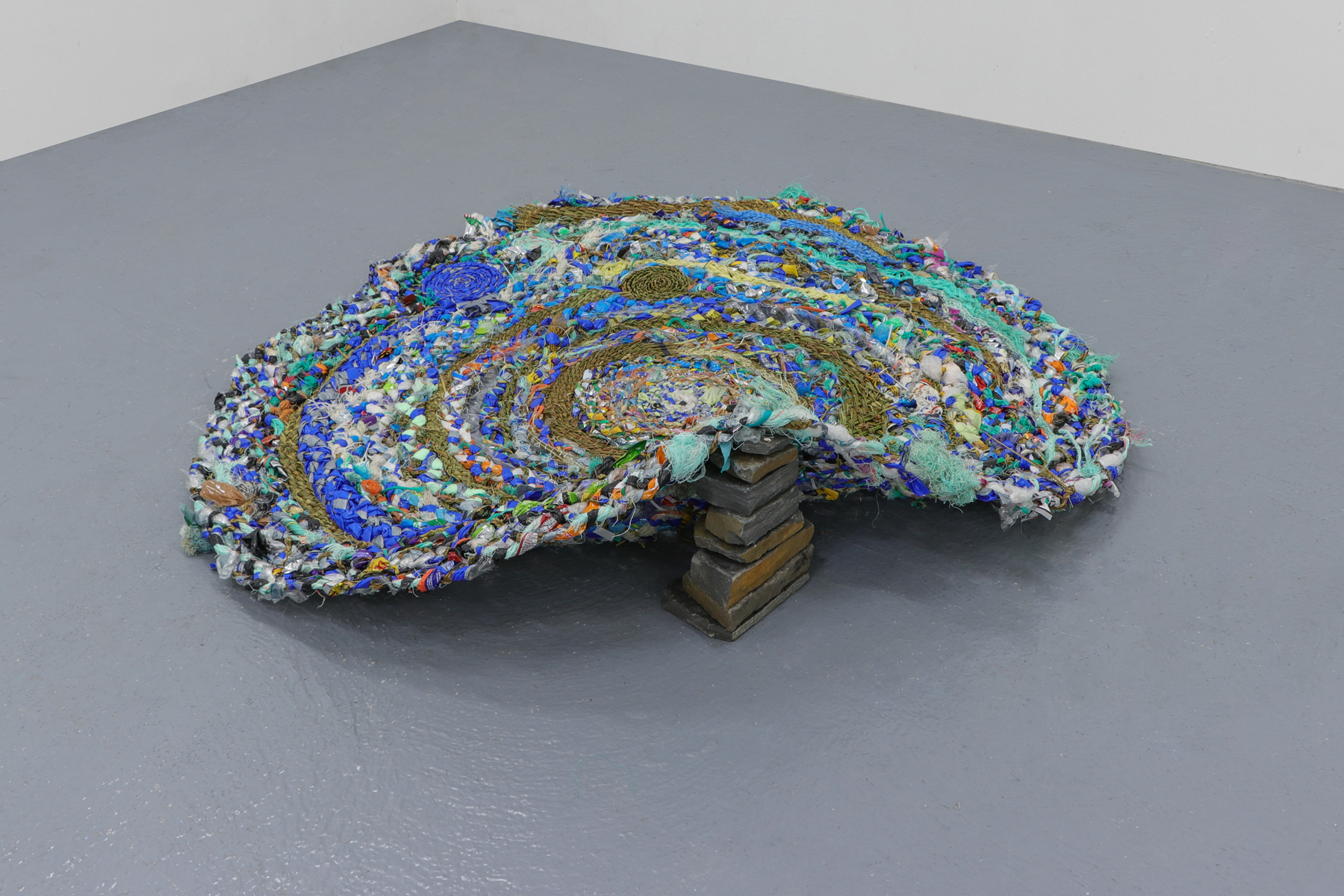

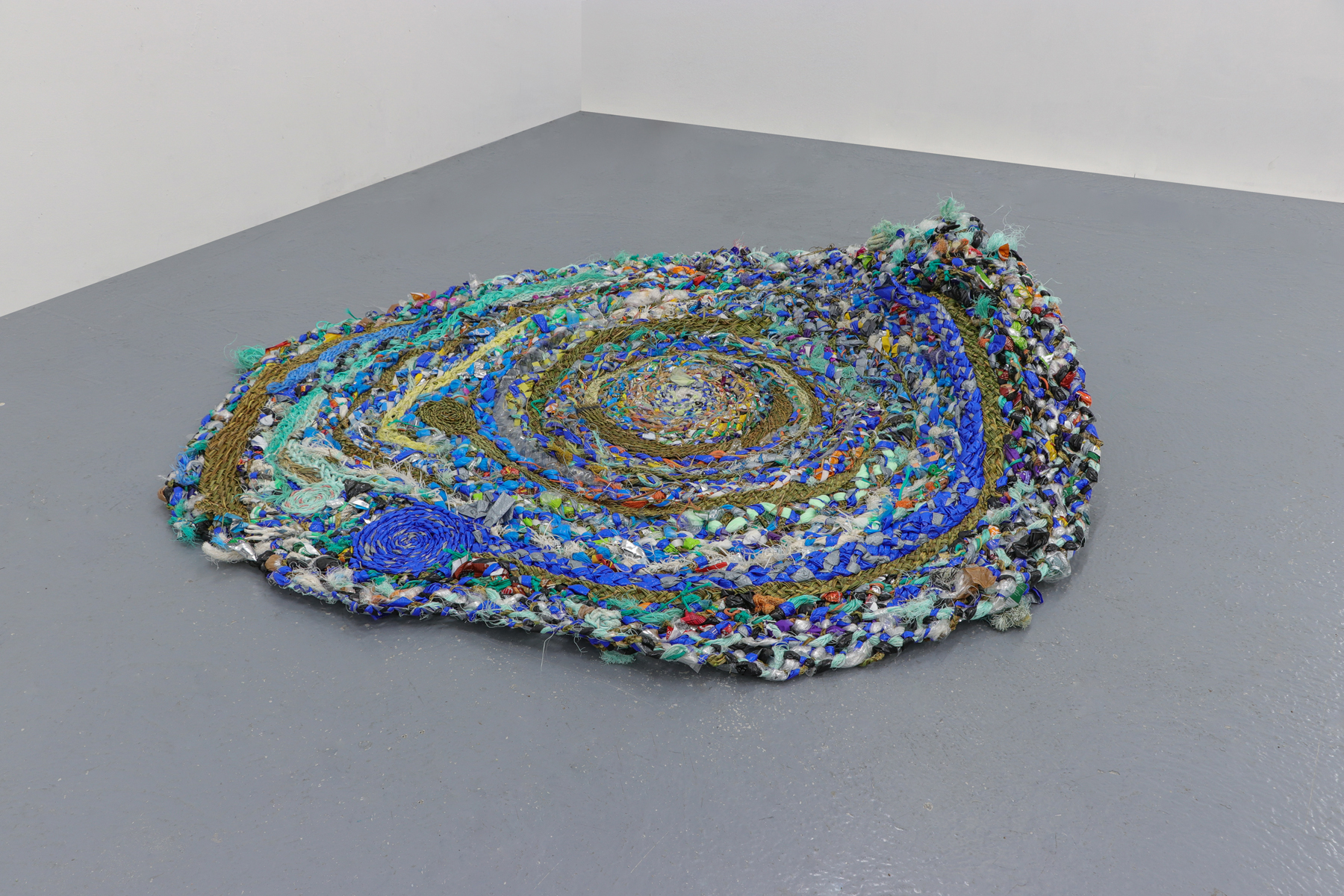
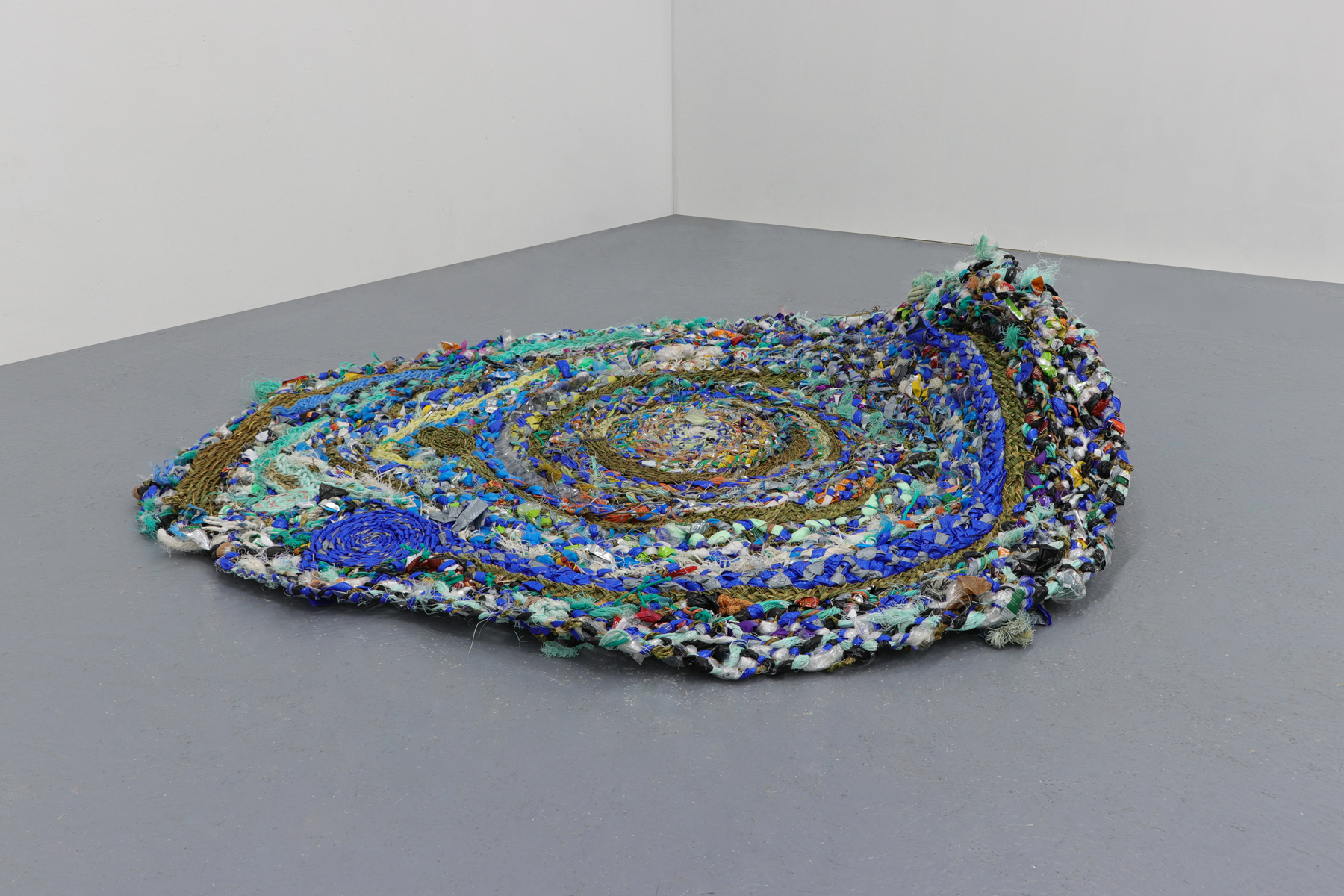







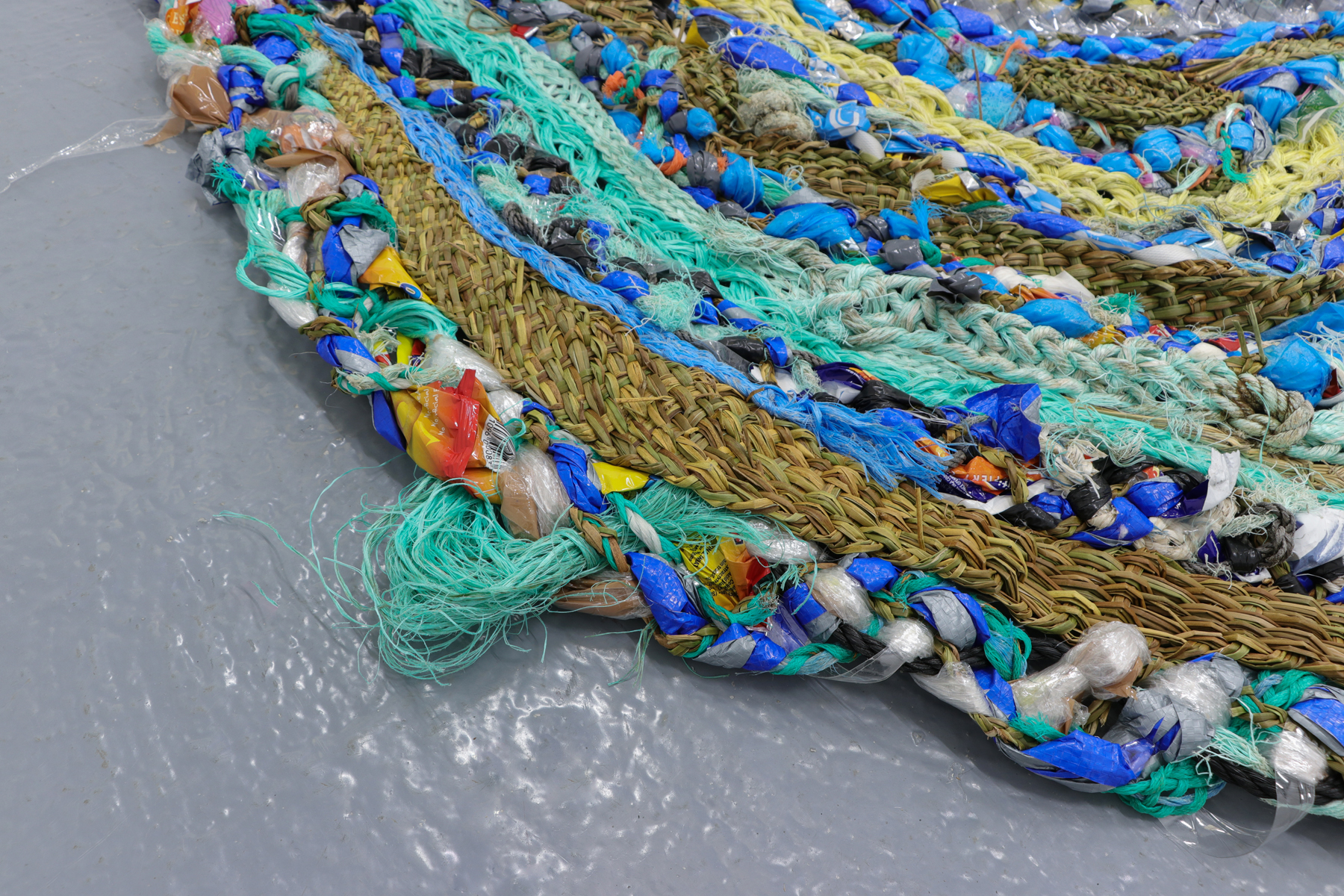

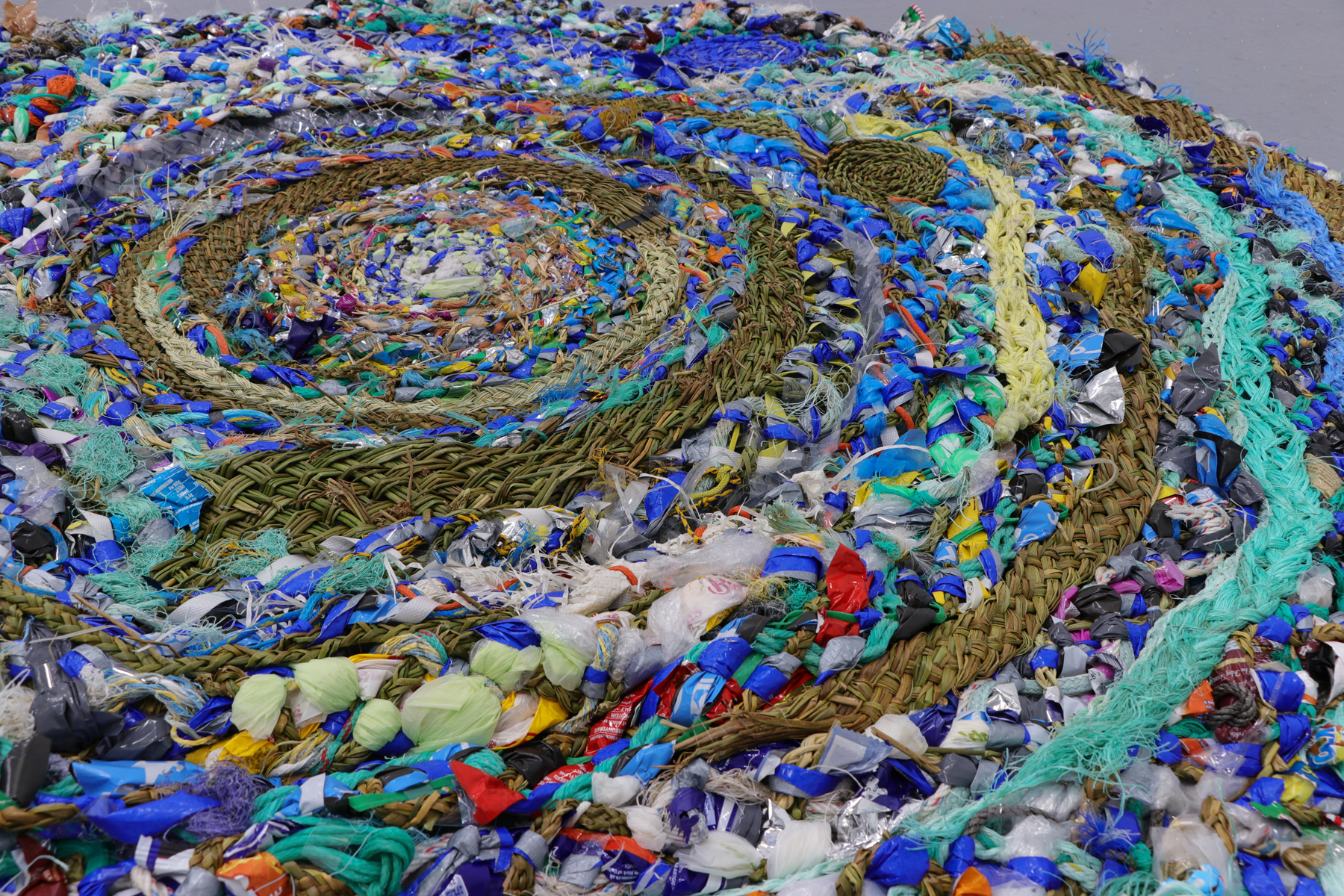
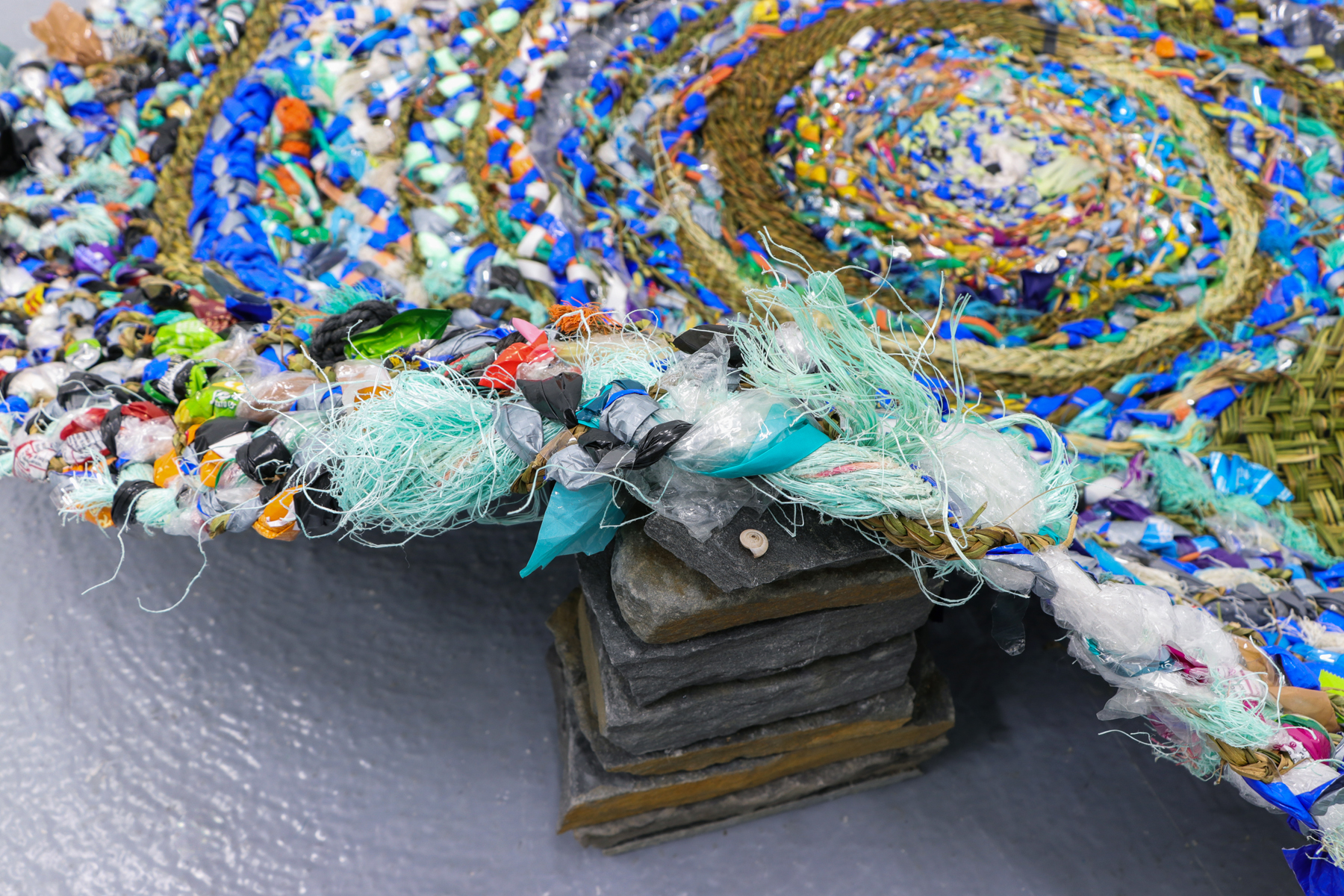
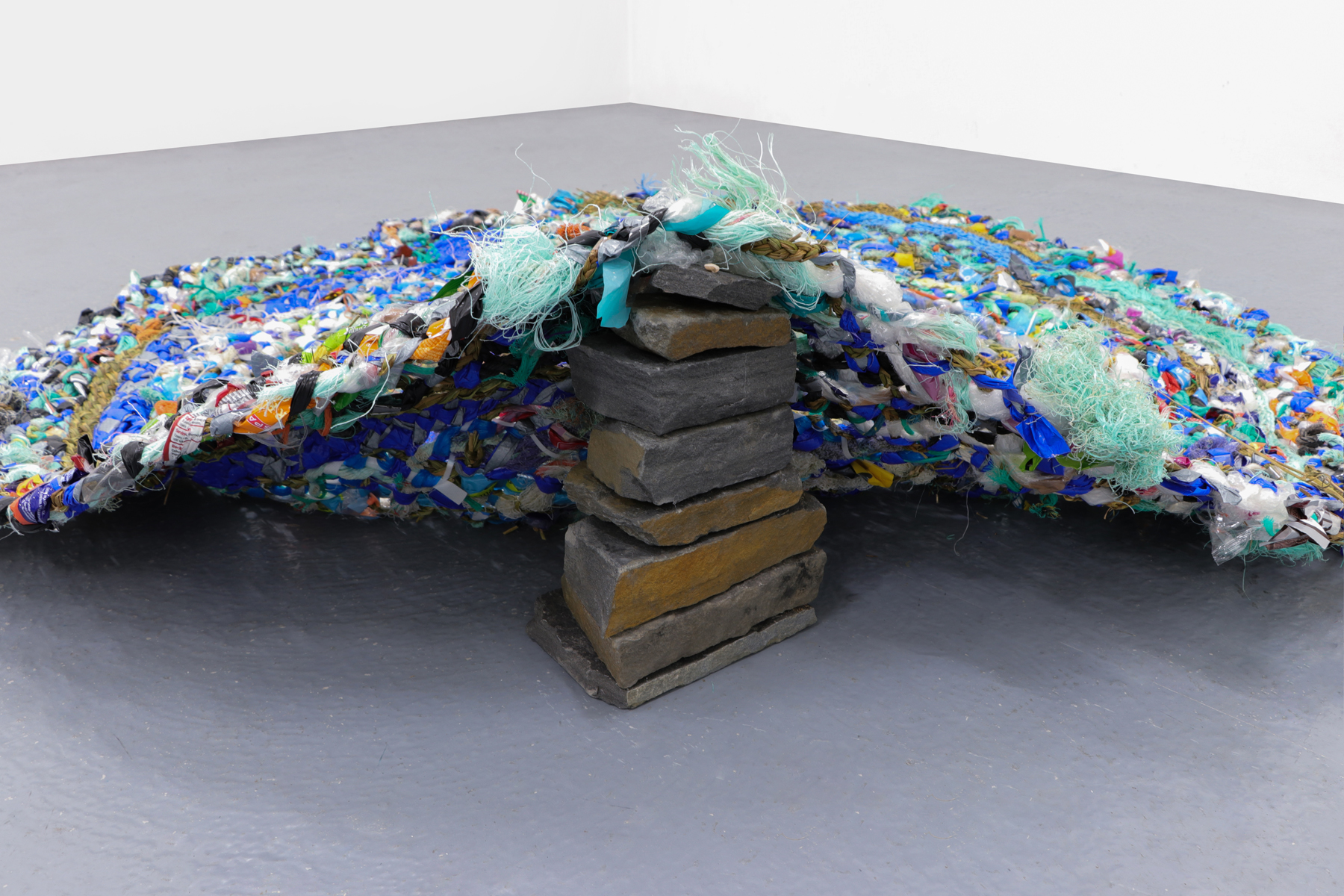

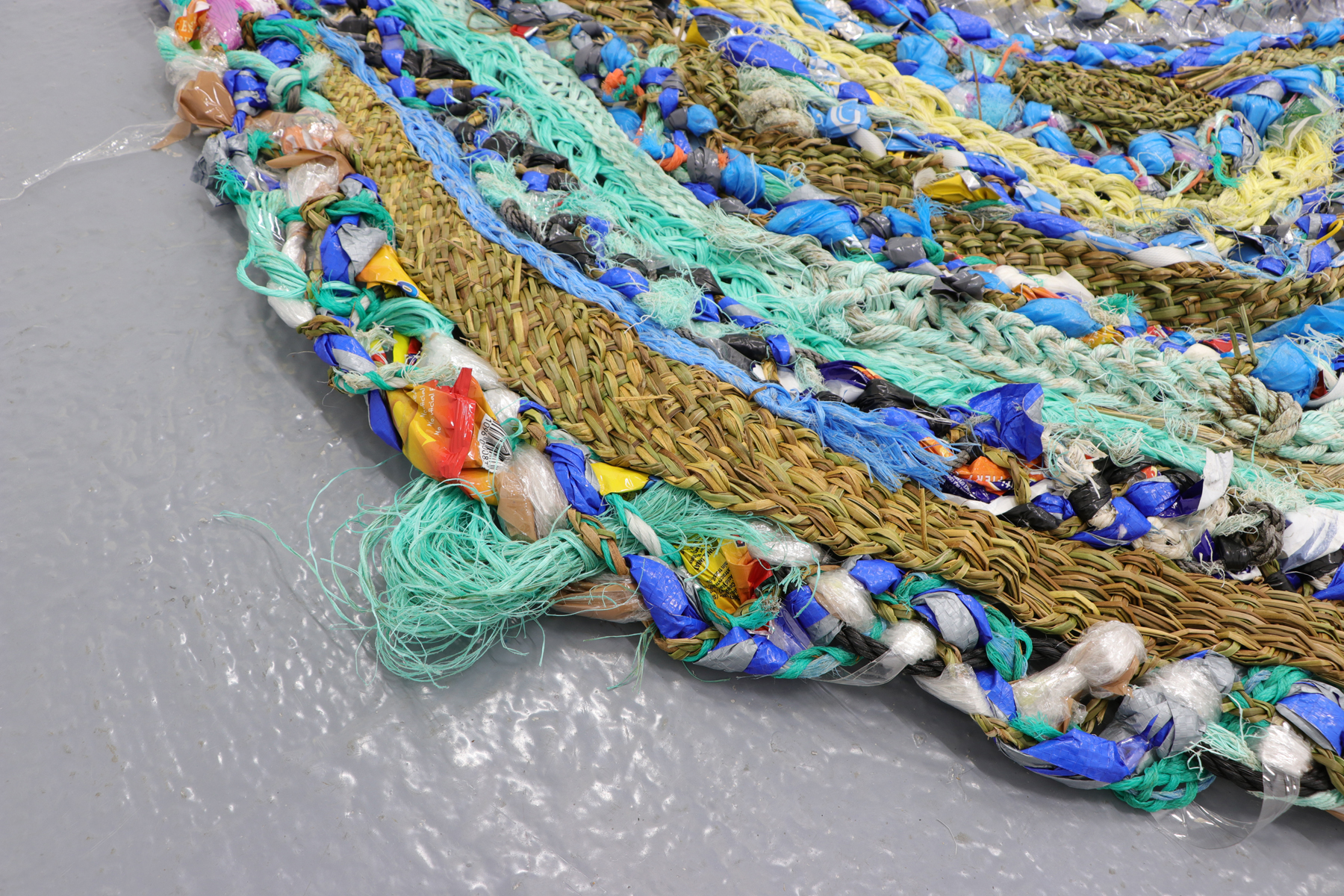
Living in the Rising Tide
Notes on Sandstone Keepsake I (Beneath the Paving Stones, Pangea)
The experience of the anthropocene is defined by privilege; marked by the structural inequalities and huge disparities in both consumption patterns and in the capacity to ride out the consequences of a changing climate. (David Farrier, Anthropocene Poetics)
Made from material scavenged and collected from the Burren area, Sandstone Keepsake I (Beneath the Paving Stones, Pangea) encapsulates all of the artist’s studies, tests and attempts to teach this tradition form of ancestral crafting to herself over the course of her residency at Burren College of Art.
Aesthetically wonky, uneven, unusable and willfully amateur, here material and method come together as a meditation on the ways in which colonialism's extractive industries and imperialism’s global capital are instrumental in the dissolution of tradition and alienation of labor. Inspired by geologic processes, McChrystal works with soft sculptural relationships—folding, stacking, leaning and draping elements that are at once specific and generic — in order to underscore the “shimmering vitality intrinsic to matter” and cultivate in the viewer a sense of “thickened “ or “entangled time.”
Through the production of a wildly unprofessional traditional rush mat, the artist uses a diasporic lens to consider the places her family has called home, and the ways in which their migration stories have been influenced by the same neoliberal policies that intensified the climate crisis and cause the material conditions at the root of forced migration.
The mat is arranged in a symbiotic relationship with a stack of locally mined paving stones 350 million years in the making that was inspired by the slogan of the 1968 student protests in France “Beneath the paving stones, the beach,” which called on people to imagine a just vision of the future. Pointing to use and interpretation of landscape, the stones are arranged in a form that recalls not only the history and culture of dry-stone wall building throughout Ireland, but also cairns — or human-made piles of stones that have been used as way-finders for many centuries but are now erected to excess in landscapes frequented by tourists.
At once ocean, island, new landmass, garbage patch, and Pangea, the object is a call to action towards an Earth-centered shift, asking the viewer to consider their own power to act in the face of capitalism’s slow violence.